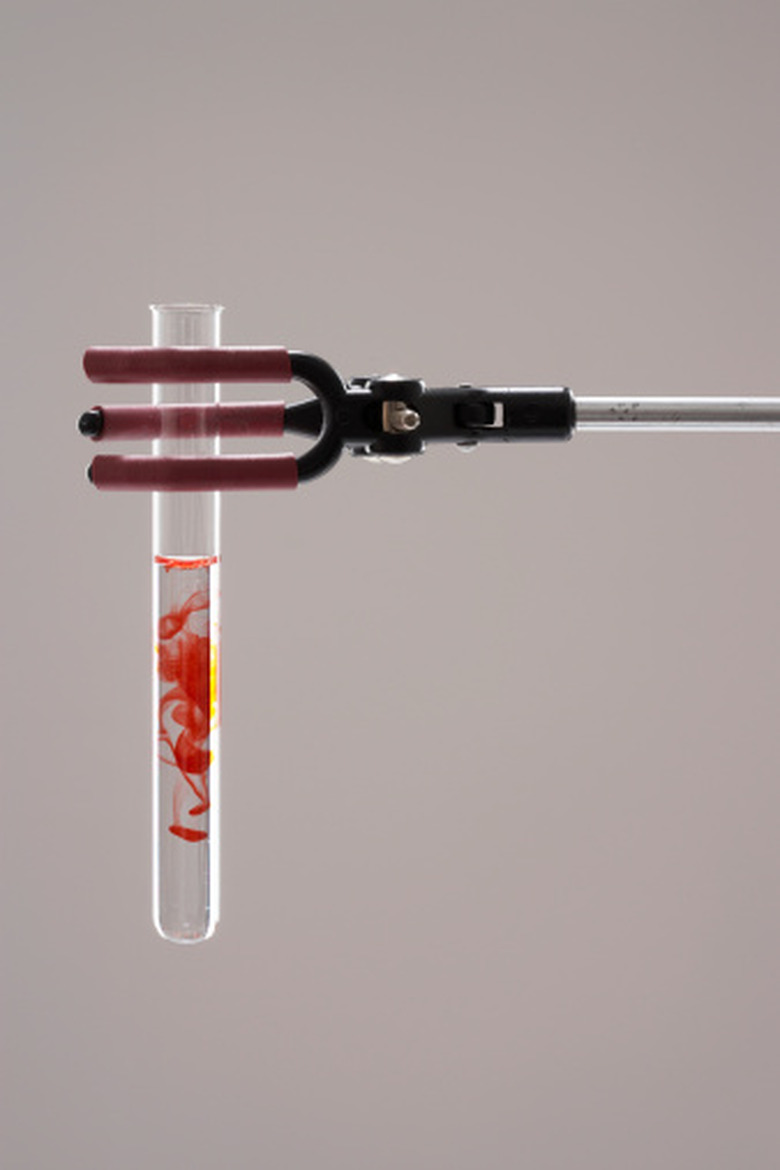How To Identify Molecules As Polar Or Non-Polar
The old adage of like dissolves like comes from understanding the polar or non-polar character of molecules. A molecules polarity rises from the electronegativity of the atoms in the molecule and the spatial positioning of the atoms. Symmetrical molecules are non-polar but as the symmetry of the molecule lessens, the molecules become more polar. Covalent bonds share electrons between the atoms with the larger portion of the electrons residing closer to the atom with the higher electronegativity.
Step 1
Determine if the molecule is ionic or covalent. Ionic molecules are polar when dissolved in solution. Ionic molecules release or accept electrons from other atoms in the molecule.
Step 2
Identify the atoms of the molecule and the types of bonds between them. Covalent bonding between atoms in the molecule will determine the spatial orientation of the atoms and is important when determining regions of charge.
Step 3
Find the relative electronegativity of the atoms in the molecule. The trend of electronegativity increases as you move towards the upper right hand corner.
Step 4
Generate an arrow along each bond that indicates the positive and negative end of the bond and the length of the arrow is proportional to the difference between the electronegativities. These are the dipoles of the molecule.
Step 5
Ensure that each bond in the molecule is correctly oriented based on the bonding in which it is involved. Single bonds are oriented at 109.5 degrees in the shape of a tetrahedron, a double-bonded atom has bonds at 120 degrees with a planar triangle orientation and a triple bond is a planar line with a bond angle of 180 degrees. Examples of these are carbon tetrachloride, water and carbon monoxide.
Step 6
Sum the individual dipoles within the molecule to determine the overall dipole of the molecule. In a molecule like carbon dioxide, there are two dipoles that originate at the carbon atom and point towards the oxygen atom. These dipoles are oriented 180 degrees apart and are exactly the same magnitude, resulting in a molecule that is non-polar. In contrast, the water molecule has a tetrahedral orientation with the dipoles pointing from the hydrogen atoms towards the oxygen atom and possessing an equal length. Two other dipoles exist between the oxygen atom and the two lone pairs of electrons, which point away from the oxygen atom towards the remaining corners of the tetrahedron. Since all the dipoles point in one direction, the molecule is polar.
Step 7
Classify each molecule as polar or non-polar based on the size of its molecular dipole. The greater the dipole of the molecule, the closer the molecule is to the polar side of the classification scale.
Cite This Article
MLA
Lancaster, Sean. "How To Identify Molecules As Polar Or Non-Polar" sciencing.com, https://www.sciencing.com/identify-molecules-polar-nonpolar-8508807/. 24 April 2017.
APA
Lancaster, Sean. (2017, April 24). How To Identify Molecules As Polar Or Non-Polar. sciencing.com. Retrieved from https://www.sciencing.com/identify-molecules-polar-nonpolar-8508807/
Chicago
Lancaster, Sean. How To Identify Molecules As Polar Or Non-Polar last modified March 24, 2022. https://www.sciencing.com/identify-molecules-polar-nonpolar-8508807/
